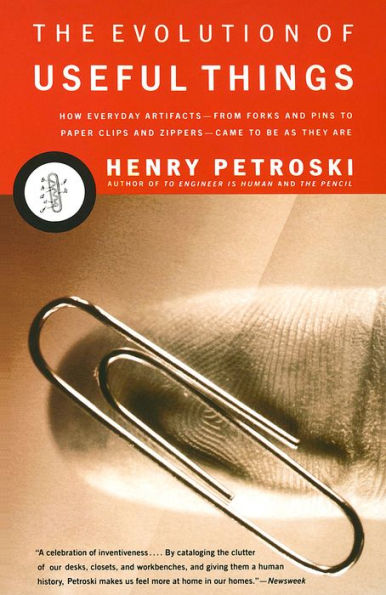Interviews
Exclusive Author Essay
Writing About Things
For as long as I can remember, I have been fascinated by things large and small. I wanted to know what made my watch tick, my radio play, and my house stand. I wanted to know who invented the bottle cap and who designed the bridge. I guess from early on I wanted to be an engineer.
In Paperboy I have written about my teenage years, during which I delivered newspapers when I wasn't taking apart one of my mother's kitchen appliances. The newspaper itself is a thing of wonder for me, and I recall in some detail how we delivered it in the 1950s, folding it into a tight package and flipping it from a bicycle. My bike, a Schwinn, consumed a lot of my time and attention as a teenager, and it is a kind of character in my memoir. My family, friends, and teachers naturally also appear, but it is the attention to things as well as people that ties Paperboy to my other books.
Like a lot of writers, I write books to try to understand better how the world and the things in it work. My first book, To Engineer Is Human, was prompted by nonengineer friends asking me why so many technological accidents and failures were occurring. If engineers knew what they were doing, why did bridges and buildings fall down? It was a question that I had often asked myself, and I had no easy answer. Since the question was a nontechnical one, I wrote my book in nontechnical language. I am pleased that engineers and nonengineers find the book readable and helpful in making sense of the world of things and the people who make things.
There is a lot more to the world of things than just their breaking and failing, of course, and that prompted me to write another book for the general reader. The Pencil is about how a very familiar and seemingly simple object is really something that combines complex technology with a rather interesting history. The story of the pencil as an object has so many social and cultural connections with the world that it makes a perfect vehicle for conveying the general nature of design, engineering, manufacturing, and technology.
Pencils, like everything else, have changed over time, and I explored that idea further in The Evolution of Useful Things. This book is about invention and inventors and how and why they continue to make new things out of old. In it, I describe inventors and engineers as critics of technology, fault-finders who can't leave things alone. Their quest for perfection leads to very useful new things, such as paper clips, zippers, Post-t® notes, and a host of other inventions whose stories I tell in the book.
As an engineer, I am also interested in large things, and bridges are some of the largest things made. Engineers of Dreams is about the bridging of America, telling the stories of some of our greatest spans, including the George Washington, Golden Gate, Eads, and Mackinac bridges. It also tells the story of the engineers who designed and built these monumental structures, emphasizing that their personalities and the political and technical climate have a great deal to do with what bridges look like and how they work.
Engineers do more than build bridges, and I have told the stories of many of their other achievements in Remaking the World. Among the great projects described in this book are the original ferris wheel, Hoover Dam, the Panama Canal, the Channel Tunnel, and the Petronas Towers, now the tallest buildings in the world. The stories of these world-class things are true adventures in engineering, and it does not take a degree in engineering to appreciate them or understand their making and their working.
As much as I like large and unique structures, I have continued to return to more commonplace ones in my writing. The Book on the Bookshelf had is origins one evening while I was reading in my study. As I looked up from my chair, I saw not the books on my bookshelves but the shelves themselves, and I wondered about the first bookshelves. My search for an answer led me to the discovery that our practice of storing books vertically on horizontal shelves with the spines facing outward was not at all the way it was originally done. In fact, our seemingly natural way of placing books on shelves had to be invented over the course of many centuries. Writing The Book on the Bookshelf reinforced my belief that there is a fascinating story behind even the simplest and most familiar of objects.
As long as there are things to wonder about, there are stories to be written about them. That makes me happy, because writing about things seems to be my thing. (Henry Petroski)



